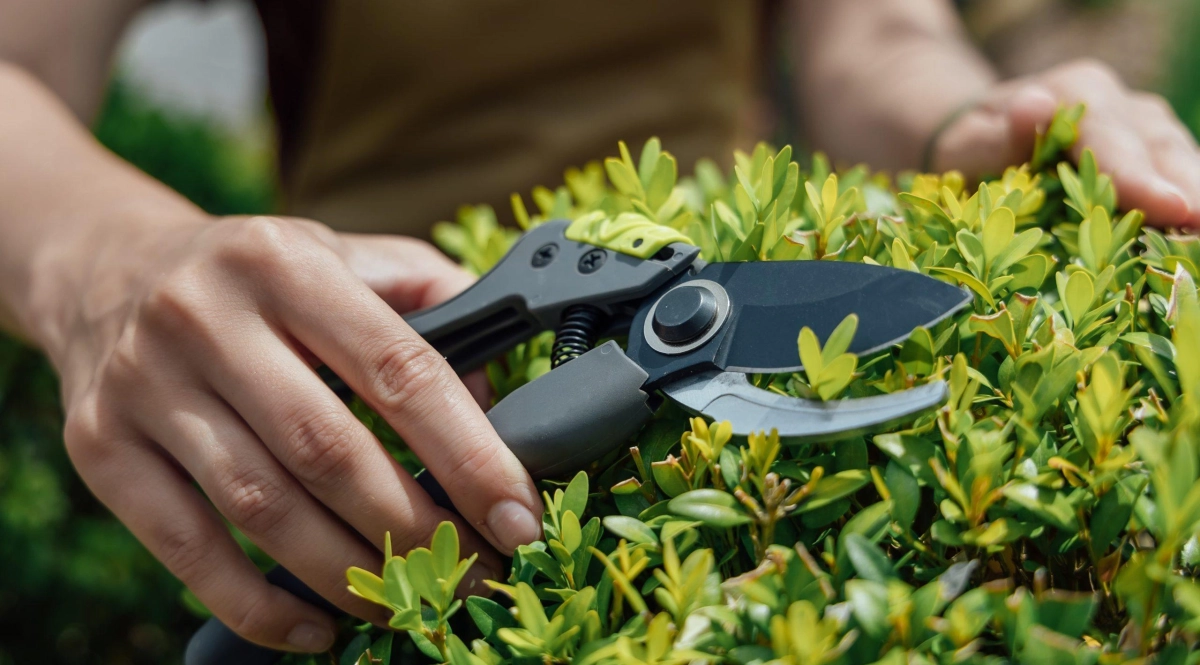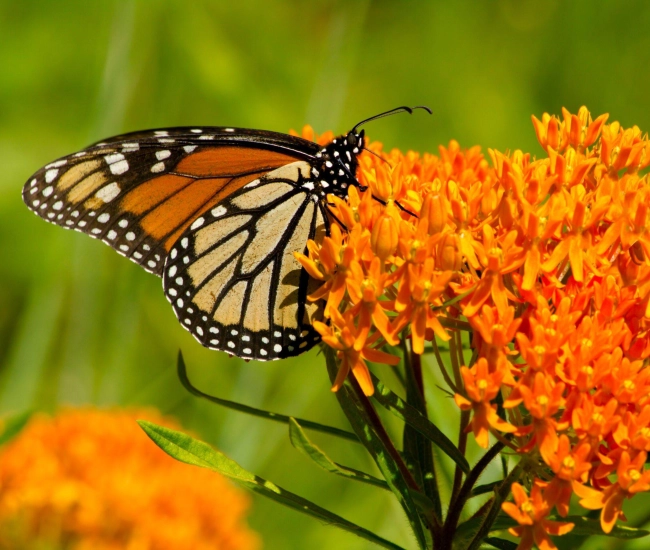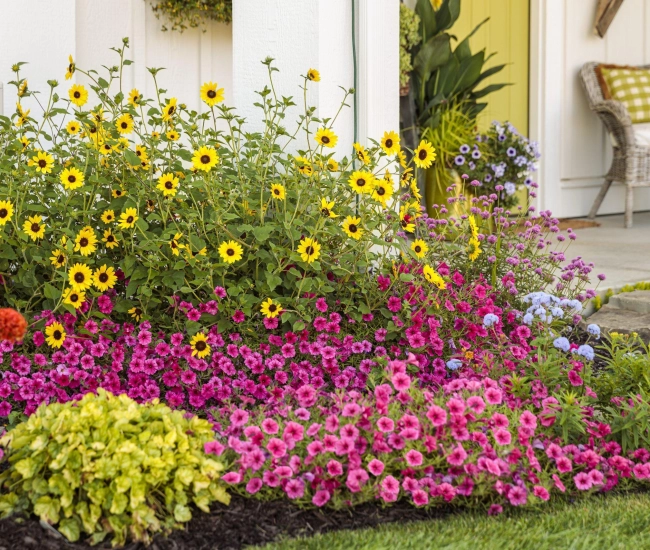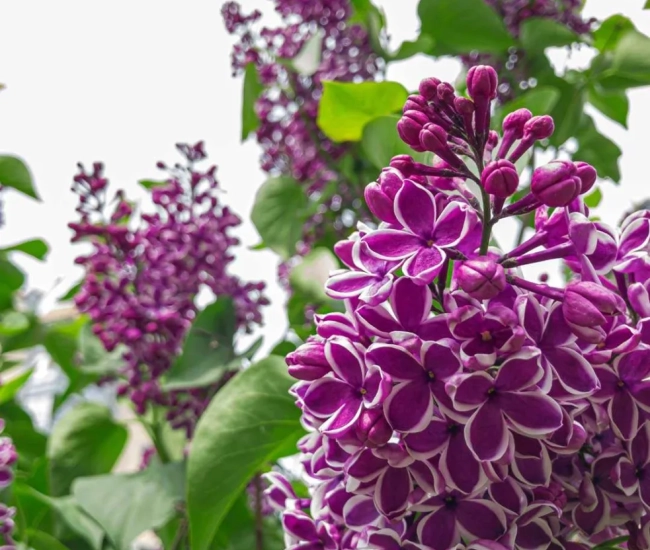
A question often arises when discussing garden maintenance: should perennials be pruned in the fall or is it better to wait until spring? There is no clear answer on the subject, as it is actually a matter of personal taste and choice for the gardener. So, dear gardener, do you prefer to prune your perennials in the fall or spring?
The aerial parts of perennials die in the fall; it is the roots that remain alive during the winter, allowing the plant to regrow when the good weather returns. In October, when the stems, leaves, and flowers wither, the plant has stored all the energy needed to survive the coming months. Whether you decide to cut it back to the ground now or wait until spring doesn’t make a big difference to it. However, leaving the foliage of perennials in place in the fall has several advantages:
Perhaps you find that letting the plants collapse to the ground and die in the fall is not very aesthetic and you still prefer to prune in the fall. No problem, it’s really your choice. Take the opportunity to add some colorful fall annuals in pots like chrysanthemums to give your garden a little pep before winter arrives.

It is not necessary to prune shrubs, but to shape them, reduce their size, or encourage flowering, it can be beneficial. For shrubs that bloom in the spring, like lilacs, do not prune in the fall to avoid compromising the flowering. Prune about two weeks after flowering, allowing time for the branches that will bear next year’s buds to grow. For shrubs that bloom in summer and fall or do not bloom, you can prune in the fall, but early in spring, before the buds break, remains the best time.
If your shrub needs rejuvenation, you can cut it back to the ground, at 15-20 cm. This is called coppicing. Be careful, not all shrubs can undergo this treatment. Check with a consultant at your Passion Jardins store to ensure the possibility and, if applicable, the best time for drastic pruning of your shrub.
Dead or diseased branches, suckers, and shoots can be pruned at any time of the year. If you cut a diseased branch, make sure to disinfect your tools before cutting another one to prevent the spread.
Now, it’s up to you to decide: will you prune this fall or wait until spring? Both options are valid, it’s up to you! Still uncertain? Visit your Passion Jardins store where you’ll find expert advice and the best tools for maintaining your garden, both in spring and fall!
Pruning Perennials
The aerial parts of perennials die in the fall; it is the roots that remain alive during the winter, allowing the plant to regrow when the good weather returns. In October, when the stems, leaves, and flowers wither, the plant has stored all the energy needed to survive the coming months. Whether you decide to cut it back to the ground now or wait until spring doesn’t make a big difference to it. However, leaving the foliage of perennials in place in the fall has several advantages:
- Time Saving
In the spring, you will have a good cleanup of the flowerbeds to do whether you cut back the perennials in the fall or not. Save time by doing everything at once in the spring. - Root Protection
If the snow cover is low and your land is exposed to strong winds, the fallen leaves and stems of withered perennials will create a protective layer against frost for the roots. Furthermore, this mix at the base of the plants will retain snow, thus forming a better barrier against the cold, as snow is an excellent insulator. This is ideal for particularly cold and low-snow winters, but since it’s hard to predict, it’s better not to take any risks. - Soil Amendment
A good portion of the dead leaves will compost after spending the winter on the ground under the snow. This will nourish your soil without you having to do anything, isn’t that wonderful! By leaving everything in place, you’ll find that in spring, there’s much less left in the flowerbeds than in the fall. Take advantage of this by composting the dead leaves from your trees by shredding them with the lawnmower and spreading them in your flowerbeds: two birds, one stone! - Life in the Garden
Some perennials, including ornamental grasses, coneflowers, and hydrangeas, have very interesting ornamental advantages. Their dried flowers and stems remain upright and sway in the wind, bringing life to your winter landscape. Their brownish and beige hues stand out against the pristine white of the snow. Moreover, they provide a nice shelter for some beneficial insects in the garden, and the few fruits and seeds they still have can feed birds during this time of food scarcity!
Perhaps you find that letting the plants collapse to the ground and die in the fall is not very aesthetic and you still prefer to prune in the fall. No problem, it’s really your choice. Take the opportunity to add some colorful fall annuals in pots like chrysanthemums to give your garden a little pep before winter arrives.
And the Shrubs?

It is not necessary to prune shrubs, but to shape them, reduce their size, or encourage flowering, it can be beneficial. For shrubs that bloom in the spring, like lilacs, do not prune in the fall to avoid compromising the flowering. Prune about two weeks after flowering, allowing time for the branches that will bear next year’s buds to grow. For shrubs that bloom in summer and fall or do not bloom, you can prune in the fall, but early in spring, before the buds break, remains the best time.
If your shrub needs rejuvenation, you can cut it back to the ground, at 15-20 cm. This is called coppicing. Be careful, not all shrubs can undergo this treatment. Check with a consultant at your Passion Jardins store to ensure the possibility and, if applicable, the best time for drastic pruning of your shrub.
Dead or diseased branches, suckers, and shoots can be pruned at any time of the year. If you cut a diseased branch, make sure to disinfect your tools before cutting another one to prevent the spread.
Now, it’s up to you to decide: will you prune this fall or wait until spring? Both options are valid, it’s up to you! Still uncertain? Visit your Passion Jardins store where you’ll find expert advice and the best tools for maintaining your garden, both in spring and fall!
Tips and advice



